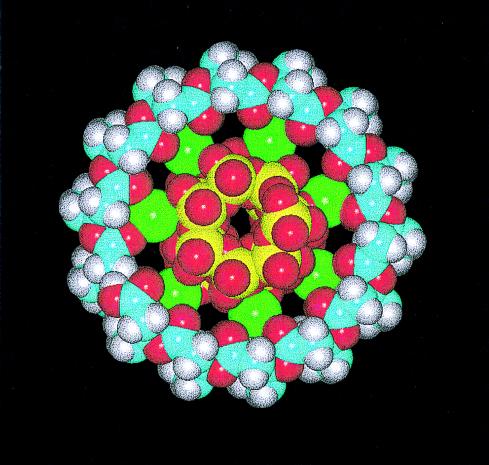FIG. 16.
Model of the P(3HB)-Ca2+-polyphosphate complex from E. coli. This P(3HB) complex forms a channel in the membrane to transport Ca2+ ions out of the cell. It is proposed that the channel is also involved in DNA uptake by competent E. coli cells. In this model, the Ca2+ ions (green) are localized between the inner polyphosphate molecule (yellow phosphorus atoms and red oxygen atoms) and a P(3HB) helix (red oxygen atoms, blue carbon atoms, and white hydrogen atoms). The methyl side groups of the P(3HB) helix face the outside of the channel and are in contact with the hydrophobic lipids of the membrane. The carbonyl oxygen atoms face the interior of the channel and ligand the Ca2+ ions. The phosphate groups play a similar role. Extrusion of Ca2+ ions may result from physical constraints on the structure or from enzymatic synthesis and degradation of the polyphosphate chain at the membrane/cytosol and membrane/periplasm interfaces.

